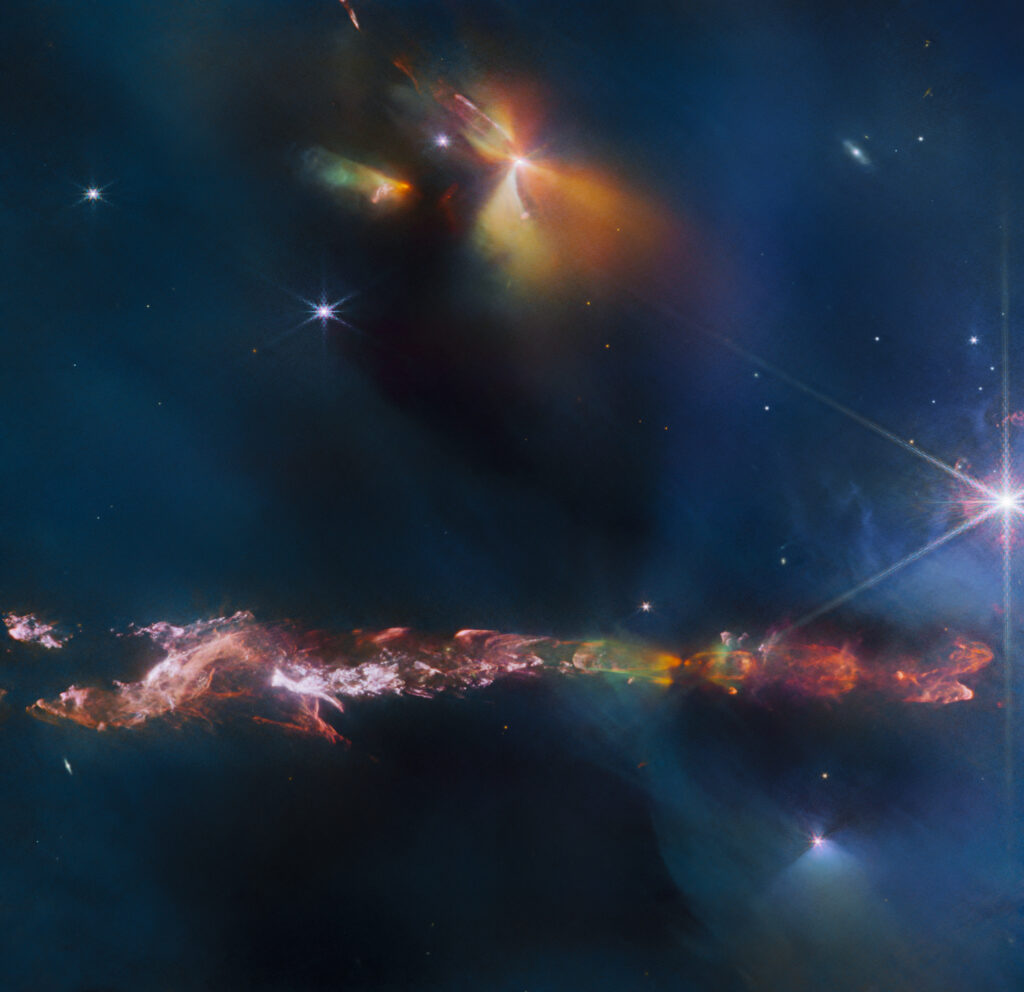Astronomers working with the James Webb Space Telescope (JWST) have published a spectacular new image. It shows a jet spewed by a newborn star.

The region captured by JWST is located on the outskirts of the active star formation region IC 348. It is located at a distance of about a thousand light-years from the Sun and is a cluster of several hundred newborn luminaries surrounded by gas clouds.
The lower part of the image is dominated by a bright structure known as HH 797. This is a Herbig-Haro object. Such structures are formed when jets of incandescent gas released by protostars collide with the surrounding matter, which leads to the appearance of shock waves. Several bright objects can also be seen in the upper part of the frame. It is assumed that these are protostars.
In the past, astronomers believed that HH 797 was produced by a single protostar. But thanks to JWST, it turns out that it actually represents a pair of almost parallel jets. Thus, their sources are a binary star system.
It is worth saying that these jets are a relatively short-lived phenomenon. They exist for only a few thousand years, which is literally a moment by astronomical standards. Nevertheless, according to some researchers, they play an important role in stellar evolution. Jets can condense matter, which contributes to the formation of new luminaries.
Earlier we talked about how James Webb found methane in the atmosphere of an exoplanet.
According to https://esawebb.org
Follow us on Twitter to get the most interesting space news in time
https://twitter.com/ust_magazine


